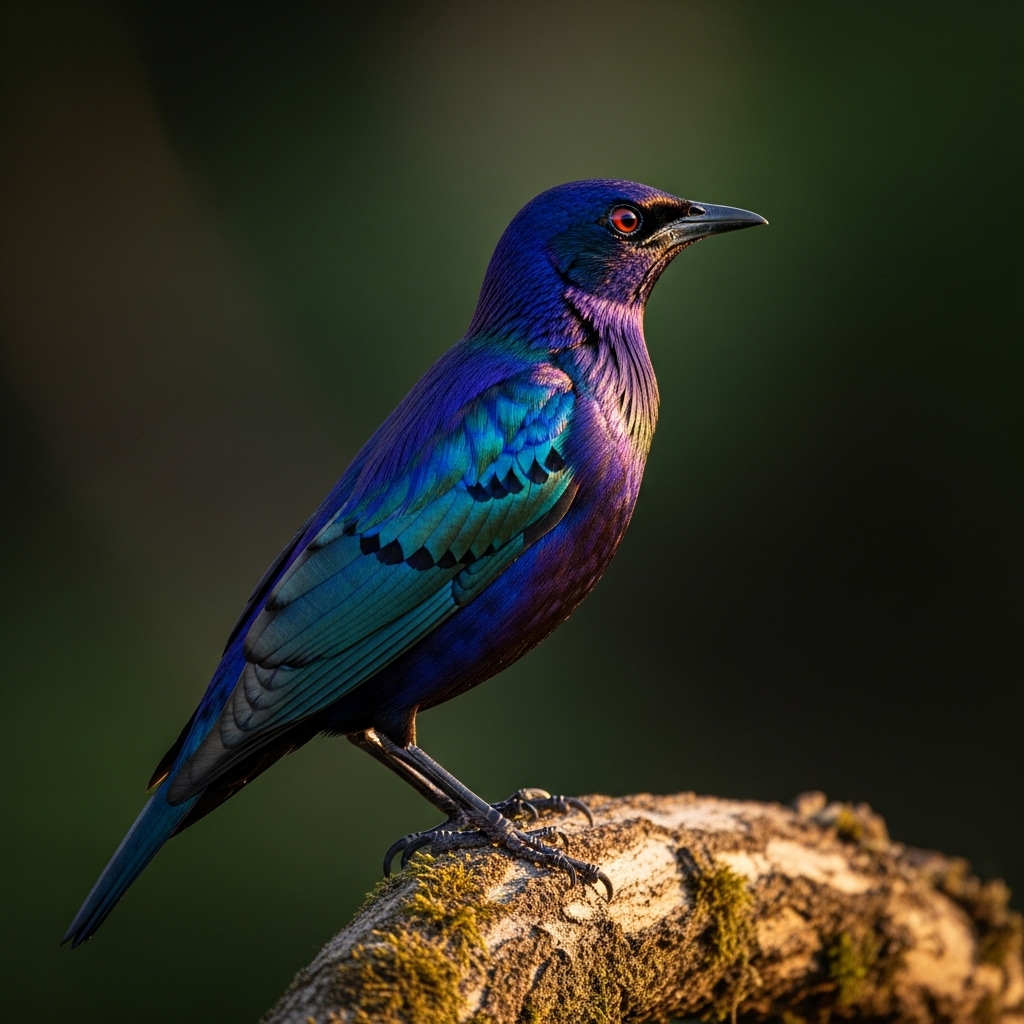When you picture the African savanna, you likely think of dusty plains, acacia trees, and the “Big Five.” But look up. In the treetops, you might just find a flash of purple so vivid, so electric, that it looks like a living, flying amethyst.
This is the Violet-backed Starling (also known as the Amethyst Starling), and it is a strong contender for the title of Africa’s most colorful songbird. But this beauty is only half the story—a story of dazzling light, dramatic contrasts, and clever adaptation.
Here’s why this incredible bird should be on every nature-lover’s radar.
A Dazzling Display of Light, Not Pigment
The first thing you notice about a male Violet-backed Starling is, of course, the color. It’s a rich, velvety, iridescent purple that seems to change with every angle of the sun. In bright light, it’s a brilliant violet; in the shadows, it can look almost black.
But here’s the fascinating part: that color isn’t pigment.
Like a soap bubble or the back of a CD, the bird’s stunning color comes from iridescence. The feathers contain microscopic, complex structures that refract and scatter light. This means the bird isn’t purple—it’s structured to reflect only the violet wavelengths of light. This is why its color is so intense and shimmers with a metallic sheen that no paint or pigment could ever replicate.
This dazzling purple back is made even more dramatic by its bright, snow-white belly, creating a contrast that is simply breathtaking.
A Bird of Two Halves: Extreme Sexual Dimorphism
Here is the twist: if you saw a female Violet-backed Starling, you would have no idea it was the same species.
This bird is one of the most dramatic examples of sexual dimorphism (a visible difference between sexes) in the bird world.
- The Male: A “flying jewel” designed to be seen. His job is to be as bright and impressive as possible to attract a mate and defend his territory.
- The Female: Modest, camouflaged, and practical. She is a dull, streaked brown and white, with none of the male’s iridescence.
This difference is a perfect evolutionary strategy. While the male is busy being fabulous, the female’s drab colors are essential for survival. She is the one who incubates the eggs, and her camouflage keeps her hidden from predators in the nest.
Where and When to Find This Avian Gem
Violet-backed Starlings are widespread across sub-Saharan Africa, from Senegal in the west to South Africa in the south.
However, they aren’t just sitting out in the open. They are woodland birds, preferring open forests, savannas, and riverine woodlands. They are also frugivores—fruit eaters—so the best way to find them is to look for trees full of fruit, especially figs.
They are also intra-African migrants. In many parts of southern Africa, their arrival is a celebrated sign of summer. They follow the ripening fruits, moving in flocks and filling the canopy with their (admittedly less-than-beautiful) series of whistles and clicks.
Quick Facts: Violet-backed Starling
- Scientific Name: Cinnyricinclus leucogaster
- Size: About 6-7 inches (16-18 cm)
- Diet: Primarily fruit (especially figs), but also insects (like flying ants and termites).
- Nesting: Cavity nesters. They use natural tree holes or old, abandoned nests of woodpeckers and barbets.
- Social: Often found in pairs or small flocks. Can gather in large numbers at a good food source.
A Sign of a Healthy Ecosystem
While not currently endangered, these starlings are an important part of their environment. As fruit-eaters, they are critical seed dispersers. They eat the fruit in one location, fly off, and “deposit” the seeds elsewhere, effectively planting new trees and keeping the forest healthy.
Seeing a flock of Violet-backed Starlings is more than just a treat for the eyes; it’s a sign that the woodland around you is healthy and fruiting.
A Jewel Worth Searching For
The Violet-backed Starling is a perfect example of nature’s artistry. It’s a dazzling display of physics, a textbook case of evolutionary biology, and a vital part of the African ecosystem.
So, the next time you’re on a safari, don’t just scan the horizon for lions. Look up, and you might just be rewarded with a flash of purple that outshines any jewel.
Have you ever been lucky enough to see a Violet-backed Starling? Or is this iridescent wonder now on your birding bucket list? Let us know in the comments!



